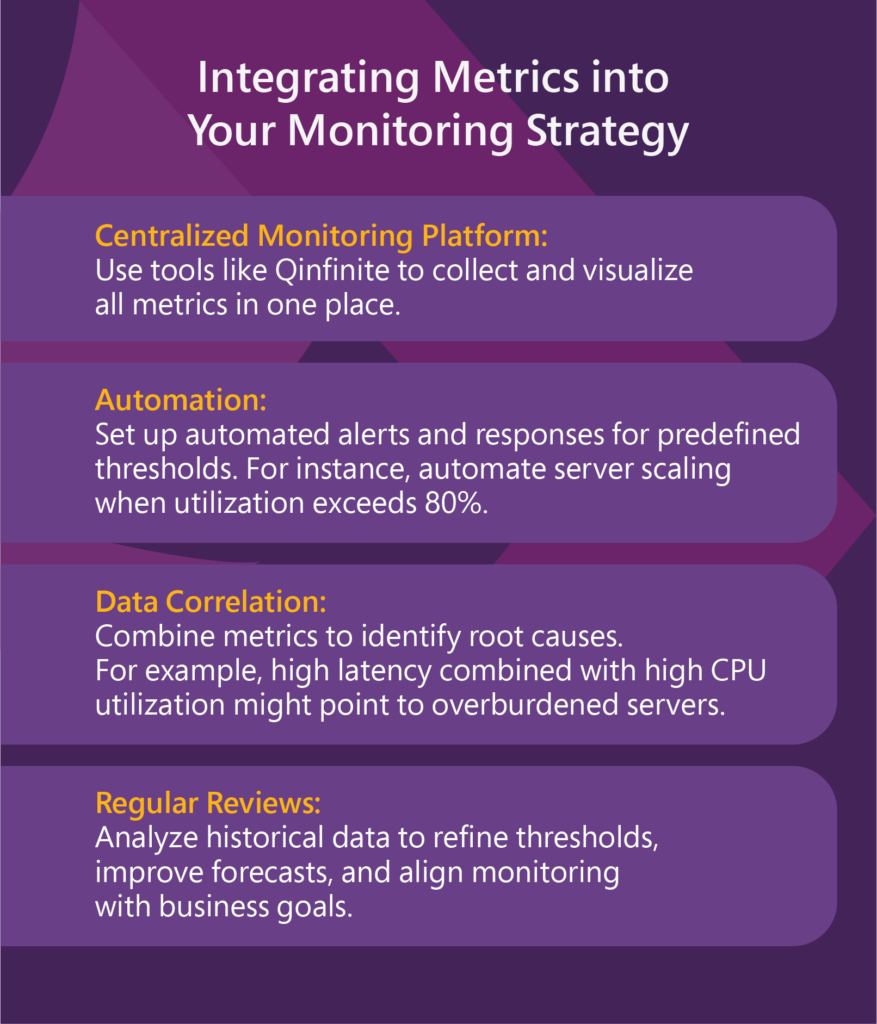5 Ways SAP Testing Services Can Optimize Your Business Processes
In today’s technology-driven landscape, businesses are constantly striving to streamline their operations, enhance efficiency, and stay ahead of the competition
Read moreAutomation in IT operations enable agility, resilience, and operational excellence, paving the way for organizations to adapt swiftly to changing environments, deliver superior services, and achieve sustainable success in today's dynamic digital landscape.
Next-generation application management fueled by AIOps is revolutionizing how organizations monitor performance, modernize applications, and manage the entire application lifecycle.
AIOps and analytics foster a culture of continuous improvement by providing organizations with actionable intelligence to optimize workflows, enhance service quality, and align IT operations with business goals.
Monitoring the health of your IT infrastructure is not just about reacting to issues; it’s about taking a proactive approach to ensure optimal performance, reliability, and efficient resource allocation. The ability to measure the right metrics serves as the backbone of this proactive stance.
But, let us first understand What is IT Infrastructure Monitoring Metrics?
Infrastructure monitoring metrics refer to those that focus on servers, virtual machines, storage, networks, applications, operating systems, and other essential components—essentially, all the elements that constitute your IT infrastructure. Metrics like performance, capacity, resource utilization and overall IT health are the cornerstones for ensuring optimal performance and early problem identification. Issues in any of these areas can affect the availability of applications and workloads, as well as increase the costs associated with maintaining your infrastructure.

This blog provides an in-depth exploration of these critical metrics, analyzes their business implications, and offers insights into infrastructure monitoring tools and best practices tailored for IT professionals.
Performance metrics measure how well your infrastructure components meet workload requirements. Key indicators include latency, which gauges the time taken to process and return a request, and throughput, which measures the rate at which tasks are processed.
Why It Matters:
High latency directly affects application performance, leading to slower response times, frustrated users, and potential revenue loss. Monitoring performance ensures that bottlenecks are addressed promptly to maintain service levels.

Best Practices:
Capacity metrics determine whether your infrastructure can meet current and future resource demands. These metrics assess the availability of compute, storage, and network resources against anticipated workload volumes.
Why It Matters:
Without adequate capacity planning, businesses face unexpected outages, which can disrupt operations and damage customer trust. Capacity metrics help forecast resource requirements, ensuring smooth scaling during growth or peak demand periods.
Best Practices:
Utilization metrics track the percentage of available resources (CPU, memory, disk, and network) being consumed to handle workloads. They provide insight into whether resources are being underused, overutilized, or balanced effectively.
Why It Matters:
Underutilization leads to wasted resources and increased costs, while overutilization risks system crashes and degraded performance. Striking the right balance optimizes costs and ensures reliable operations.

Best Practices:
Health metrics evaluate the overall condition of your infrastructure, including server uptime, error rates, and hardware failures. These metrics provide an early warning system for potential issues, enabling pre-emptive action.
Why It Matters:
Unhealthy infrastructure leads to frequent outages, degraded performance, and increased operational costs. Monitoring health metrics ensures that systems remain operational and reliable.
Best Practices:
Monitoring these four key metrics—Performance, Utilization, Capacity, and Health—offers significant business benefits across industries:

The real value of these metrics lies in how you use them to drive actionable insights. Here’s a step-by-step approach to integrating these metrics into your IT monitoring strategy:

Effective IT infrastructure monitoring is a cornerstone of modern business success. Monitoring performance, utilization, capacity, and health metrics provides a robust foundation for IT infrastructure management. However, managing these metrics in isolation can be overwhelming.
This is where Quinnox’s intelligent application management (iAM) platform, Qinfinite, comes into play. With its advanced capabilities in data integration, real-time analytics, and AI-powered insights, Qinfinite empowers businesses to excel across all four metrics. From pinpointing latency issues to optimizing resource utilization, scaling capacity, and ensuring infrastructure health, Qinfinite delivers unparalleled visibility and control.
Ready to redefine your IT operations? Why Wait? Request for a 120 – Minutes Free consultation and discover how Qinfinite can empower your infrastructure today!
IT infrastructure monitoring is the process of tracking and analyzing key metrics of infrastructure components like servers, storage, networks, and applications to ensure optimal performance, reliability, and resource efficiency.
Tools like centralized monitoring platforms and predictive analytics software can track and forecast resource requirements, enabling better capacity planning.
Organizations can save up to 30% on IT operations by optimizing resource utilization and reducing downtime-related costs by 40% through proactive monitoring.
Qinfinite optimizes performance, resource utilization, capacity planning, and infrastructure health by offering advanced features like automated alerts, predictive analytics, and centralized data visualization.
Infrastructure Monitoring helps organizations meet Recovery Time Objectives (RTO) and Recovery Point Objectives (RPO) by providing real-time insights and ensuring preparedness for system failures.
Proactive monitoring leads to fewer system failures, reduced downtime, and more efficient resource use, which collectively result in better ROI. By preventing costly outages and ensuring optimal performance, businesses can lower maintenance costs, reduce unplanned downtime, and maximize the efficiency of their IT resources.
Response time directly impacts user satisfaction. High response times can frustrate users and indicate performance issues.
In today’s technology-driven landscape, businesses are constantly striving to streamline their operations, enhance efficiency, and stay ahead of the competition
Read moreIn today’s rapidly changing world, enterprises have to improve businesses by keeping up pace with technological advancements and improve operational efficiencies across value chains.
Read moreExplore how AI-driven software testing improves QA with improved test efficiency, accuracy and cost-reduction. Dive into key insights from Forrester report.
Read moreGet in touch with Quinnox Inc to understand how we can accelerate success for you.